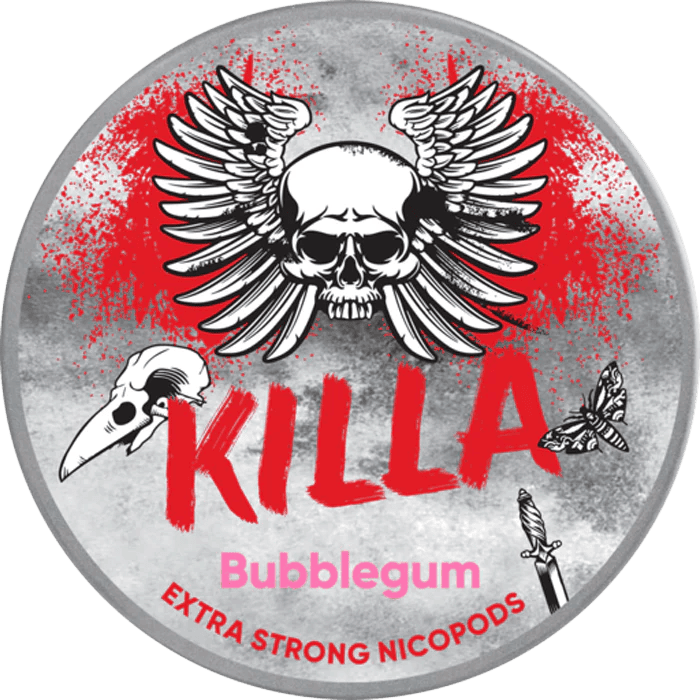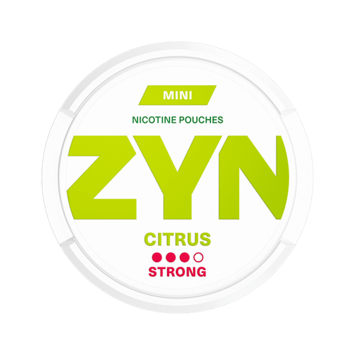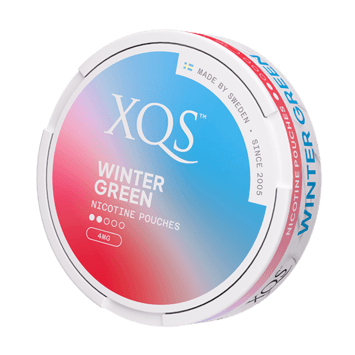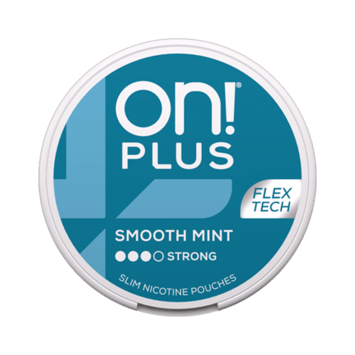Do nicotine pouches cause cancer?
Philip Plainstein

Have you ever wondered if nicotine pouches, those small, discreet packets gaining popularity, might pose serious health risks? While many turn to these products as a smoking cessation tool, concerns linger about their safety, particularly regarding cancer risks. Understanding the relationship between nicotine pouches and cancer is crucial for making informed decisions about their use.
Nicotine itself isn’t classified as carcinogenic, but other chemicals in these pouches, such as tobacco-specific nitrosamines (TSNAs), might pose risks. Recent studies reveal varying levels of these harmful substances across different brands, including ZYN, highlighting the importance of product choice.
While nicotine pouches offer a smokeless alternative to traditional tobacco products, their long-term health effects remain under investigation. Continuous use can lead to oral health issues and other systemic problems, suggesting that caution is essential, especially for heavy users.
Understanding Nicotine Pouches and Their Composition
Nicotine pouches are small, discreet products that have gained popularity in recent years. They are designed to be used orally, offering a smokeless alternative to traditional tobacco products. These pouches typically consist of a small fabric bag filled with a mixture of ingredients, which users place between their cheek and gum.
Ingredients and Chemical Components
The composition of nicotine pouches varies by brand but generally includes a mix of natural extracts and lab-created chemicals. Common ingredients include:
- Water and microcrystalline cellulose, which provide the base structure of the pouch.
- Natural flavorings to enhance taste.
- Nicotine, which is delivered in controlled amounts.
- Other additives, such as sweeteners or preservatives, to improve palatability and shelf life.
Some studies have identified the presence of chemicals like ammonia, chromium, and formaldehyde in certain products. These substances can have implications for both health and user perception.
The Role of Nicotine Salt
Nicotine salt plays a crucial role in these products. It allows for higher concentrations of nicotine to be delivered without causing discomfort. This innovation makes the experience more enjoyable for users, especially those transitioning from smoking or other nicotine products.
Flavours and Variations in the Market
The market offers a wide range of flavours, from mint and citrus to fruity options, catering to diverse preferences. This variety not only enhances user satisfaction but also helps in reducing the urge to smoke, making pouches a popular choice for those seeking to quit smoking.
| Product Type | Nicotine Content | Ingredients | Health Risks | Popularity |
|---|---|---|---|---|
| Nicotine Pouches | Varies by brand (1.29 mg to 6.11 mg) | Water, microcrystalline cellulose, nicotine, flavorings | Lower toxic compounds compared to traditional tobacco | Increasing, especially among smokers |
| Traditional Tobacco | N/A | Tobacco leaf, various chemicals | Higher risk of cancer and other diseases | Declining as alternatives rise |
| Nicotine Gum | 1 mg to 4 mg | Nicotine, gum base, sweeteners | Lower risk, but may cause mouth soreness | Stable, with loyal user base |
Understanding the ingredients and their implications is essential for anyone considering nicotine pouches. While they offer a convenient alternative, it’s important to weigh the potential risks and benefits.
The Debate: Do Nicotine Pouches Cause Cancer?
There is ongoing debate about whether nicotine pouches, a popular alternative to traditional tobacco products, might increase cancer risk. While many use these products to quit smoking, concerns about their safety persist.
Research on Carcinogenic Risks
A 2022 study analysed 44 nicotine pouch products and found varying levels of tobacco-specific nitrosamines (TSNAs), chemicals linked to cancer. While nicotine itself isn’t classified as carcinogenic, other compounds in the pouches could pose risks.
Expert opinions suggest that while nicotine isn’t directly tied to cancer, the presence of harmful chemicals like TSNAs in some products raises concerns. Regulatory bodies like the FDA have not approved these pouches for smoking cessation, highlighting potential health risks.
Comparisons With Traditional Tobacco Products
Compared to traditional chewing tobacco, nicotine pouches generally have lower TSNA levels. However, significant variations exist between brands, with some pouches containing higher levels of harmful chemicals than others.
These findings suggest that while nicotine pouches may be a safer alternative to smoking, they are not without risks. Further research is needed to fully understand their long-term health effects.
Health Risks and Side Effects Beyond Cancer
Beyond the concerns about cancer, nicotine pouches pose other significant health risks that are important to consider. These risks affect both your oral health and cardiovascular system, highlighting the need for caution when using these products.
Oral Health Concerns
Continuous use of nicotine pouches can lead to oral health issues. Gum irritation and mouth sores are common complaints among users. Additionally, the chemicals in these products may contribute to dental decay, potentially leading to more serious oral health problems over time.
Research indicates that certain brands contain higher levels of harmful substances, which can exacerbate these issues. While nicotine pouches are considered a safer alternative to traditional tobacco products, they are not without risks.
Cardiovascular Implications
Nicotine pouches can also impact your cardiovascular health. Users often experience increased heart rate and changes in blood pressure, which may lead to a higher risk of heart disease. These effects are particularly concerning for those with pre-existing cardiovascular conditions.
Compared to traditional tobacco products, nicotine pouches generally have lower levels of harmful chemicals. However, the cardiovascular risks associated with their use remain a significant concern that should not be overlooked.
In conclusion, while nicotine pouches may offer a smokeless alternative to traditional tobacco products, they carry their own set of health risks. Understanding these risks is crucial for making informed decisions about their use. It’s essential to weigh the potential benefits against the possible harm to your oral and cardiovascular health.
Nicotine Pouches and Smoking Cessation
Nicotine pouches are often marketed as a tool to help quit smoking, but their effectiveness for this purpose remains uncertain. While they offer a convenient alternative to traditional tobacco products, there is limited evidence supporting their role in smoking cessation.
Evaluating Smoking Cessation Claims
Manufacturers often promote nicotine pouches as a way to quit smoking, yet neither the FDA nor the CDC has approved them as cessation aids. Research comparing these products to established nicotine replacement therapies (NRTs) like patches and gums shows varied results. Some studies suggest that nicotine pouches may help reduce cravings, but their long-term effectiveness is not well-documented.
Alternative Nicotine Replacement Therapies
NRTs such as patches, gums, and lozenges have a stronger evidence base for aiding smoking cessation. These products are regulated and proven to increase the chances of quitting successfully. In contrast, nicotine pouches lack robust clinical trials to support their efficacy in helping users quit smoking.
| Product Type | Nicotine Content | Effectiveness | Safety |
|---|---|---|---|
| Nicotine Pouches | Varies by brand | Limited evidence | Lower toxic compounds |
| Nicotine Patches | Steady release | Proven effective | Minimal side effects |
| Nicotine Gum | 1 mg to 4 mg | Established efficacy | May cause mouth soreness |
Consulting a healthcare professional for a validated cessation plan is advisable. While nicotine pouches may be a useful tool for some, they should be approached with caution due to their potential health risks and lack of regulatory approval for cessation.
For more information on the safety of nicotine pouches, visit Medical News Today.
Regulatory Landscape and Market Trends in the UK
The regulatory environment for nicotine pouches in the UK is shaped by both domestic policies and international standards. Unlike traditional tobacco products, nicotine pouches are classified as tobacco-free, smokeless products, which affects how they are regulated.
FDA, UK Regulations and Compliance
In the UK, nicotine pouches must comply with the Tobacco and Related Products Regulations 2016. These regulations require manufacturers to report product ingredients and nicotine content. The FDA in the US has authorised certain nicotine pouch products, such as ZYN, for sale as tobacco products, but they are not approved as smoking cessation tools. In the UK, products like ZYN have also gained regulatory authorisation, ensuring they meet safety and quality standards.
Marketing Tactics and Youth Appeal
Marketing strategies for nicotine pouches in the UK have raised concerns due to their appeal to young people. Brands often use vibrant packaging and flavours, alongside social media campaigns featuring influencers known as “ZYNfluencers.” Data shows a significant rise in usage among young people, with vaping prevalence among 11 to 18-year-olds tripling in recent years.
- Outdoor advertising and social media campaigns target youth, using appealing flavours like mint and fruit.
- Statistics indicate that 20.5% of children in Great Britain have tried vaping, highlighting the effectiveness of these marketing tactics.
These trends underscore the need for stricter regulations to prevent underage access and misuse of nicotine products.
For more information on how nicotine pouches affect your gums, visit this link.
Final Reflections on Your Health Journey
As you reflect on your health journey, it’s important to consider the role of nicotine pouches and other tobacco products in your life. These products, while marketed as a safer alternative to smoking, come with their own set of risks. Understanding these risks is key to making informed decisions about your health.
Nicotine pouches, for instance, contain varying levels of nicotine and other chemicals that can impact your oral and cardiovascular health. While they may help reduce your reliance on traditional tobacco products, they are not without risks. It’s crucial to weigh the potential benefits against the possible harm to your health.
If you’re considering nicotine pouches as part of your journey to quit smoking, it’s important to seek professional guidance. Consulting a healthcare provider can help you make the best decision for your specific situation. Additionally, it’s worth exploring other nicotine replacement therapies that have a proven track record of effectiveness.
In conclusion, while nicotine pouches may offer a convenient and discreet way to manage nicotine cravings, they are not a risk-free solution. By taking a thoughtful and informed approach, you can make choices that align with your health goals and support a healthier lifestyle. For more information on how nicotine pouches work, visit this link.









